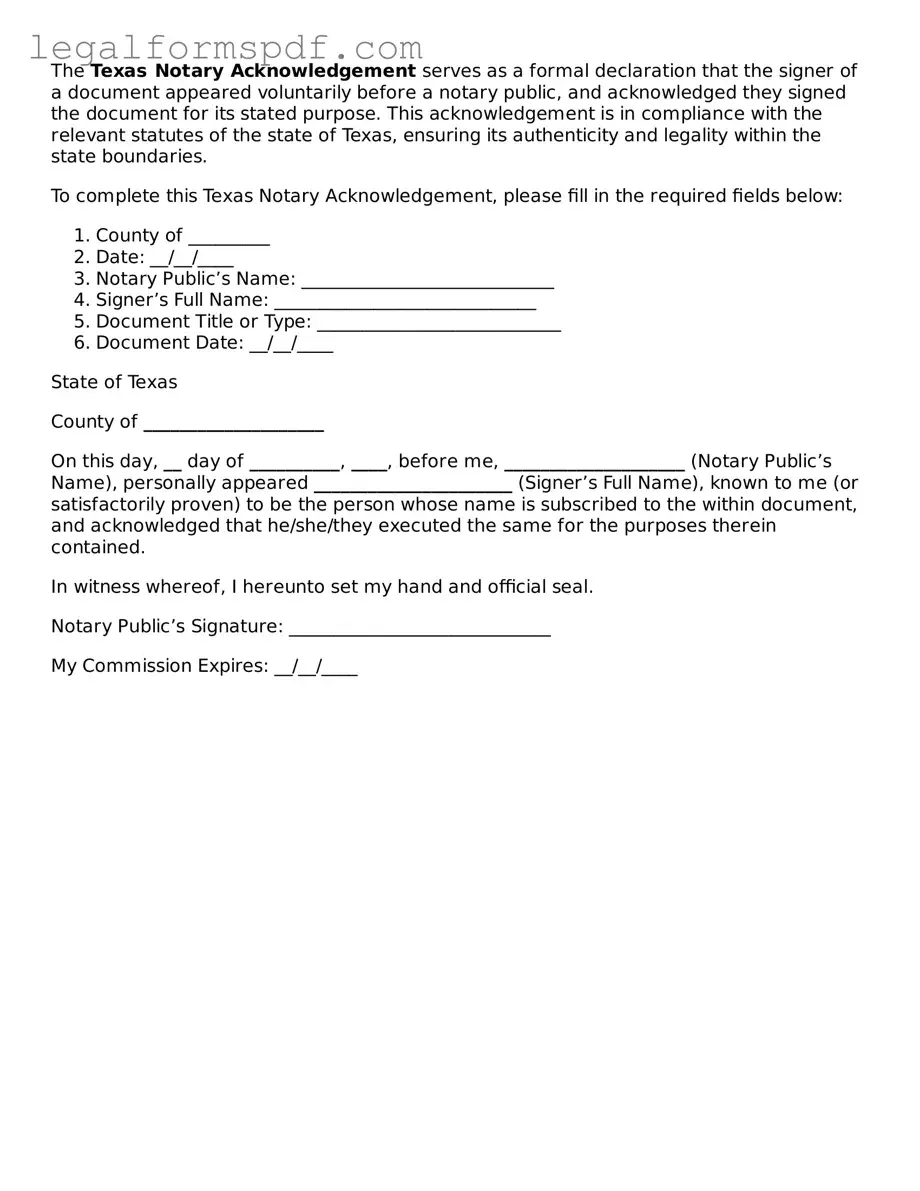The Texas Notary Acknowledgement serves as a formal declaration that the signer of a document appeared voluntarily before a notary public, and acknowledged they signed the document for its stated purpose. This acknowledgement is in compliance with the relevant statutes of the state of Texas, ensuring its authenticity and legality within the state boundaries.
To complete this Texas Notary Acknowledgement, please fill in the required fields below:
- County of _________
- Date: __/__/____
- Notary Public’s Name: ____________________________
- Signer’s Full Name: _____________________________
- Document Title or Type: ___________________________
- Document Date: __/__/____
State of Texas
County of ____________________
On this day, __ day of __________, ____, before me, ____________________ (Notary Public’s Name), personally appeared ______________________ (Signer’s Full Name), known to me (or satisfactorily proven) to be the person whose name is subscribed to the within document, and acknowledged that he/she/they executed the same for the purposes therein contained.
In witness whereof, I hereunto set my hand and official seal.
Notary Public’s Signature: _____________________________
My Commission Expires: __/__/____
